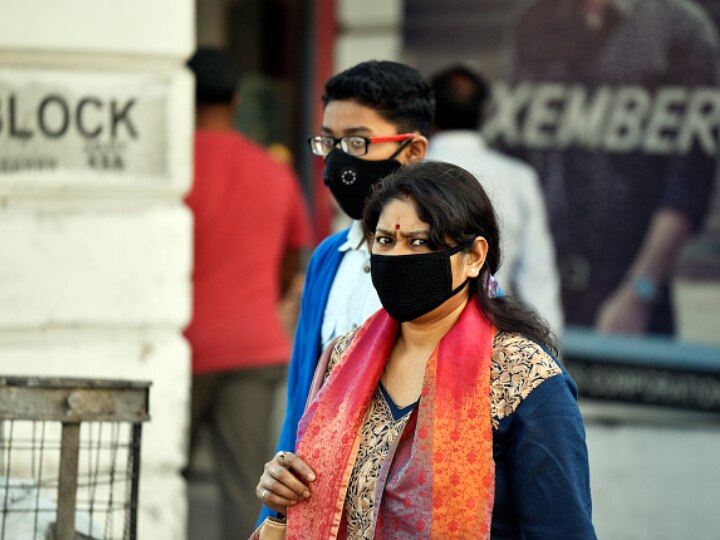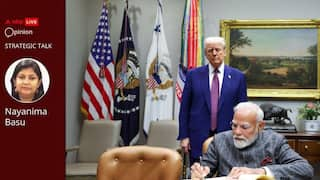Explorer
The Singular And Sinister Exceptionality Of The Coronavirus (COVID-19)
These questions—the implications of “social isolation”, the impact of the virus on the poor and low-wage workers, the question of “porous” and “closed” borders, the deployment of authoritarian models of social control, the future of globalization, and myriad others—will now confront us with renewed urgency

NEW DELHI, INDIA - MARCH 9: People seen wearing protective masks amid rising coronavirus scare at Connaught Place, on March 9, 2020 in New Delhi, India. (Photo by Getty Images)
The social, economic, and political turmoil around the COVID-19 or coronavirus pandemic presently sweeping the world is unprecedented in modern history or, more precisely, in the last one hundred years. Before we can even begin to understand its manifold and still unraveling ramifications, many of which are bound to leave their imprint for the foreseeable future, it is necessary to grasp the fact that there is nothing quite akin to it in the experience of any living person. Fewer than 5500 people have died so far, and of these just under 3100 in the Hubei province of China. There have been hundreds, perhaps a few thousand, wars, genocides, civil conflicts, insurrections, epidemics, droughts, earthquakes, and other ‘natural disasters’ that have produced far higher mortality figures. About 40 million people are estimated to have died in World War I; in the Second World War, something like 100 million people may have been killed, including military personnel, civilians, as well as those civilians who perished from war-induced hunger, famine, and starvation. Weighed in the larger scheme of things, the present mortality figures from COVID-19 barely deserve mention. And, yet, it is possible to argue that what is presently being witnessed as the world responds to the COVID-19 is singular, distinct, and altogether novel in our experience of the last one hundred years.
Why should that be the case? It would be a truism to say that no one ever quite expected something like the coronavirus to spring upon us and, virtually overnight in some places, alter the entire fabric of social existence. In 1994, an intrepid journalist and researcher, Laurie Garrett, published a voluminous book, The Coming Plague, subtitled “Newly Emerging Diseases in a World Out of Balance.” Written a few years after AIDS rudely awakened the world to the fact that our war with microbes is relentless, and that modern science’s supposed conquest of infectious diseases is a fantasy, Garrett argued that there was every likelihood that new and more lethal diseases would emerge, unless human beings adopted a perspective that would be more mindful of a “dynamic, nonlinear state of affairs between Homo sapiens and the microbial world, both inside and outside their bodies.” In his introduction to the volume, Jonathan M. Mann, Professor of Epidemiology and International Health at Harvard, and Director of the Harvard AIDS Institute, suggested that AIDS “may well be just the first of the modern, large-scale epidemics of infectious diseases.” If air travel has become possible for over a billion people, infectious agents can also be introduced into “new ecologic settings” far more easily. If AIDS has a lesson to teach us, Mann warned twenty-five years ago, it is that “a health problem in any part of the world can rapidly become a health threat to many or all.”
If Garrett and Mann, and perhaps a handful of other people here and there, may have been prescient, still the scope of the worldwide panic and emergency in which we are all trapped is outside the realm of contemporary human experience. The first death from the coronavirus was reported in Hubei province, which has a population just short of 60 million, on 10 January 2020. The notice announcing the closure of all transportation services in Wuhan, the largest city of the province with 11 million people, was issued early on January 23 and had been virtually put into effect later in the day; and by the end of the following day, nearly the entire province had been sealed off. Further orders on February 13 and 20 shut down all non-essential services, including schools, and a complete cordon sanitaire had been placed around a province with as many people as Italy, which has now become the site of the next largest outbreak.
What has transpired in Italy has been not any less dramatic. At the end of January, only three cases had been detected in Italy, and two of these were Chinese tourists. The patients were isolated and Italy moved to halt flights from China: as the Italian Prime Minister declared to the world on January 31, exuding supreme confidence, “The system of prevention put into place by Italy is the most rigorous in Europe.” A more ill-timed comment can scarcely be conceived; the disease was slowly working its way through the population—undetected , unheralded, unheeded. Until nearly the end of the third week of February there appeared to be only a handful of cases; then, within days, the numbers of those infected skyrocketed. Italy, many are likely to forget, is a country of old people; it has a negative fertility rate and a declining population. Those most susceptible to the coronavirus are the elderly, and those whose lives have been claimed are overwhelmingly among the elderly. Italy has now over 17,000 confirmed cases and over 1200 deaths. First the northern region of Lombardy was put under severe restrictions; on March 9, the entire country was placed under lockdown, shutting down everything except some essential services, pharmacies, and selected supermarkets.
Italy’s streets and famous piazzas are now deserted, but the world’s most popular tourist destination seems to have set the cue for the rest of the world. Over twenty countries, in recent days, have shut down universities, schools, amusement parks, and museums, and forbidden public gatherings—in many cases, for a month or longer. There is every possibility that, in the days ahead, major cities, in the US, Europe, India, the Middle East, and elsewhere will come under lockdown, just as schools, universities, and public and private institutions of every imaginable stripe—corporations, art galleries, government offices—in other countries follow suit. And therein lies the singularity of the social response to COVID-19: at the height of wars, disasters, and national emergencies, schools and universities have rarely shut down for such extended periods of time. Our instinct, in the face of emergencies, is to band together, to seeks communities of cohesion: but the present virus demands extreme social isolation.
If I have described the social response to COVID-19 as unfathomable in the experience of any human being who is alive, it is because for a precedence we would have to turn to the influenza epidemic of 1918-19, altogether misleadingly nicknamed the “Spanish Influenza” for no other reason than the fact that the most reliable news about this pandemic, which waxed and waned for over one year, came out of Spain which remained neutral during the war. It was then believed to have taken 20 million lives; but researchers over the last two decades have suggested that the death toll from it was between 50-100 million. Strangely, though this influenza pandemic killed more people worldwide than did World War I, it quickly became “the forgotten pandemic”—and remains so. Nowhere did it strike as hard as in India, where poverty, disease, poor nutrition, and the lack of preventive medical care rendered many—who can be differentiated along caste, class, and gender lines—extremely vulnerable. Some 18 million Indians, or 7 percent of the population of undivided India, are estimated are estimated to have died from this flu.
It is, thus far, not the mortality rate which makes the influenza pandemic of 1918-19 the true predecessor of COVID-19. Modern medicine has doubtless progressed very far in the intervening century, but even then it was understood that the creeping invasion of the virus could only be halted by enforcing quarantine and social isolation. Holcombe Ingelby, Member of Parliament from Norfolk, wrote to his son on 26 October 1918: “If any of your household get the ‘flue’, isolate the culprit & pass the food through the door! It is rather too deadly an edition of the scourge to treat it anything but seriously.” Around 200,000 people died in Britain; in the US, where the death toll was at least three times higher, Surgeon-General Rupert Blue strongly advised local authorities to “close all public gathering places if their community is threatened with the epidemic.” The mayor of Philadelphia, then the third largest city in the US, ignored the advice; the mayor of St. Louis, then the fourth largest American city, shut down “theaters, moving picture shows, schools, pool and billiard halls, Sunday schools, cabarets, lodges, societies, public funerals, open air meetings, dance halls and conventions until further notice.” The list of venues and institutions tells another tale; what is more germane is that, at its peak, the fatality rate in Philadelphia was five times higher than in St. Louis.
The epidemiology of the influenza pandemic of 1918-19 still remains something of a mystery. We likewise know comparatively little about COVID-19, though Chinese scientists had by mid-January shared its genome sequence with the world. But it appears that enough is known to establish that the protocols of self-isolation, quarantine, and social isolation will be crucial to stem its spread and eventually bring it under control. It is easy to underestimate the coronavirus, as Donald Trump has done by dismissing it as something that will disappear miraculously; but it may also be that pronouncements about the tens of millions who may be infected and may die augur a morbid outlook that, even as we are with due reason inclined to reject, points to the likelihood that the coronavirus brings to the fore critical questions which have been lingering around and will have to be addressed more openly. These questions—the implications of “social isolation”, the impact of the virus on the poor and low-wage workers, the question of “porous” and “closed” borders, the deployment of authoritarian models of social control, the future of globalization, and myriad others—will now confront us with renewed urgency.
(Vinay Lal is a writer, blogger, cultural critic, and Professor of History at UCLA)
Disclaimer: The opinions, beliefs and views expressed by the various authors and forum participants on this website are personal and do not reflect the opinions, beliefs and views of ABP News Network Pvt Ltd.
Follow Blog News on ABP Live for more latest stories and trending topics. Watch breaking news and top headlines online on ABP News LIVE TV
View More


























